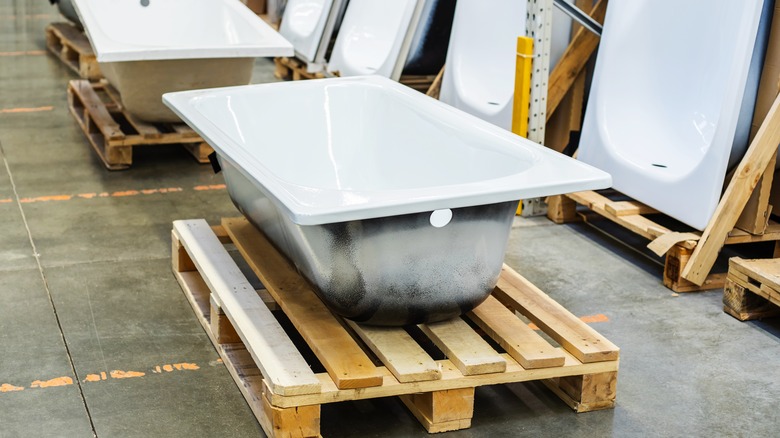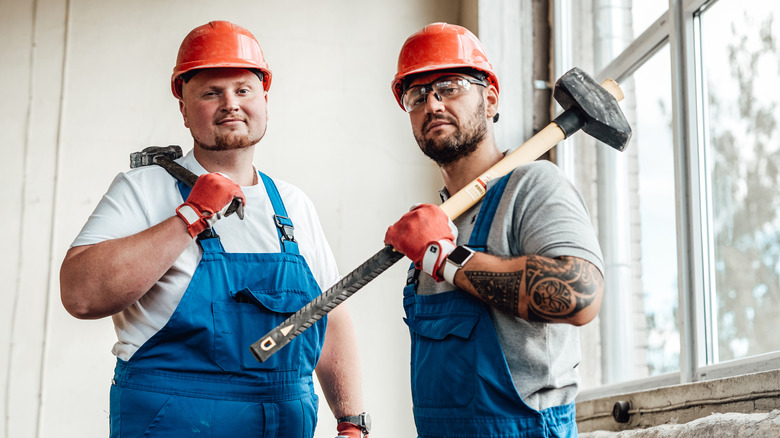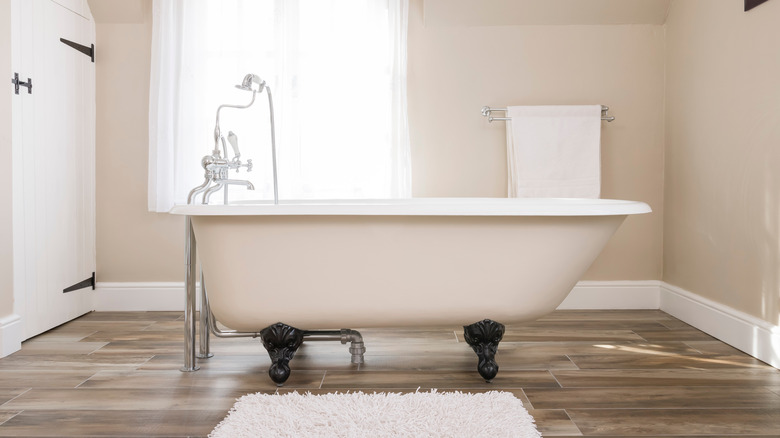Everything You Need To Safely Remove A Cast Iron Tub From Your Bathroom
So it's finally time to renovate your bathroom. You're ready for a new bathtub, perhaps one with high-pressured jets perfect for relaxing tense muscles. A bathroom renovation, however, has to start with some demolition work. If you have a cast iron tub, you'll likely need to do a lot of work to get it out. First, though, find out if you have one. If a magnet is attracted to the side of your tub when held close, it's either steel or cast iron and will likely require some muscle to remove.
Initial production of cast iron tubs started in the 1800s, often placed in the homes of the aristocracy. However, roughly 80 years later, they began being mass-produced and found their way into middle-class homes. These long-lasting tubs are sometimes still present in old properties. Newer, lighter versions were installed in homes in the mid-1930s and are still around today. Still, these are very heavy bathtubs, often weighing as much as 500 pounds. If you want to remove a cast iron bathtub from your home, you'll need to consider hiring a professional and paying to install a new bathtub or be prepared with extra help.
What you need to remove a cast iron tub
Weight aside, a cast iron tub is a solid bathroom fixture that requires careful removal to avoid safety risks. The tubs tend to have thick walls, which could require the use of several tools. For example, a reciprocating saw could be the best way to remove portions of the tub at one time, but it will require the use of multiple blades as the metal will tear through them. You can also use an angle grinder, which has a curved blade that can dig into the tub easier. It does more of the hard work of cutting into the material, requiring less overall force.
If you have some strength and determination, one of the most surefire methods for removing a cast iron tub is with a sledgehammer. The weight and force of the sledgehammer can do significant damage, but you'll have to be concerned with the risks to the supportive structure. A demolition hammer, which may be helpful, can do less damage and typically takes more work, but tends to be a safer option.
A few more steps to removing the cast iron tub
You may be ready to start pounding away to remove the tub, but before you do, get the necessary materials to protect yourself. That should include protection for both your eyes and ears. You'll also need to ensure you wear durable leather gloves since the broken edges of the tub can be sharp enough to slice right through your fingers.
On the other hand, it's possible to remove an intact cast iron tub in certain situations. To do that, you'll need to plan to remove all components around the outer edge and then work to loosen it with a rocking motion. Ultimately, you'll need to pick it up, and that is going to be much harder than any traditional inset tub (which typically weighs under 150 pounds). Plan to find a way to place it onto a rolling cart to move it slowly and carefully out of the home. In this case, you'll also need some back braces along with the confidence that you won't crack the steps or banisters in your home. If you're planning to install a cast iron claw foot tub in its place, you'll want all of that heavy-lifting support to complete the task at hand.


